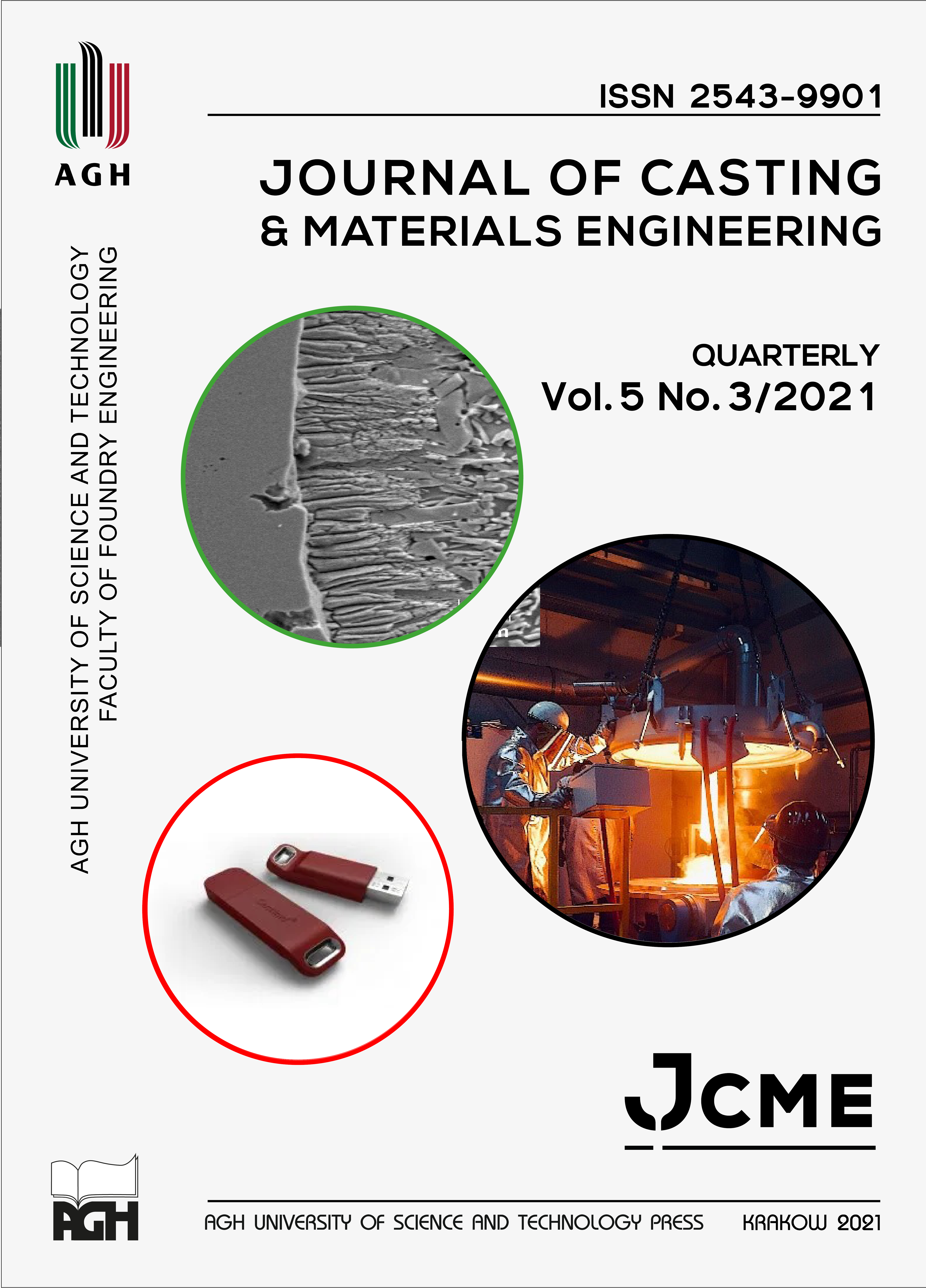Directions of the Development of the Metallization of Iron Alloy Products
DOI:
https://doi.org/10.7494/jcme.2021.5.3.40Abstract
The article discusses the future of the production of protective coatings based on the hot-dip galvanizing of iron-carbon alloys, such as steel or cast iron. Currently exploited zinc deposits will be exhausted in the next two decades and it will be necessary to start the exploitation of new deposits in order to maintain the supply or quantity of Zn on the global market. In both cases, it will be related to the increasing cost of zinc on world markets. Zinc-based protective coatings (one of the best corrosion protection methods) constitute almost 50% of the world’s zinc consumption. Economic issues with the constant increase in the price of Zn will force the change or modification of hot-dip galvanizing technology. The article presents data on the production, consumption and development of zinc prices on the global market. Possible directions are presented which producers of zinc coatings will have to follow in order to maintain sales markets, such as the modification of chemical compositions of protective alloys which could be an alternative to pure zinc coatings and the possibility of limiting zinc consumption based on the influence of the surface of galvanized elements, i.e. its metal matrix, and surface roughness.
Downloads
References
International Lead and Zinc Study Group; http://www.ilzsg.org/static/enduses.aspx?from=7 [12.02.2021].
U.S. Geological Survey; https://www.usgs.gov/centers/nmic/zinc-statistics-and-information [12.02.2021].
Mineral Commodity Summaries 2005, 2012, 2019; https://www.statista.com/statistics/264884/world-zinc-usage/ [12.02.2021].
Szczęsny A., Kopyciński D. & Guzik E. (2017). Shaping optimal zinc coating on the surface of high-quality ductile iron casting. Part 1, Moulding technologies vs. zinc coating. Archives of Metallurgy and Materials, 62, 385–390.
Kania H. & Liberski P. (2014). Synergistic Influence of the Addition of Al, Ni and Pb to a Zinc Bath upon Growth Kinetics and Structure of Coatings. Solid State Phenomena, 212, 115–120. Doi: https://doi.org/10.4028/www.scientific.net/SSP.212.115.
Wołczyński W., Pogoda Z., Garzeł G., Kucharska B., Sypień A. & Okane T. (2014). Thermodynamic and Kinetic Aspects of the Hot Dip (Zn) – Coating Formation. Part I. Archives of Metallurgy and Materials, 59, 1223–1233. Doi: https://doi.org/10.2478/amm-2014-0212.
Notowania surowców: cynk; https://www.bankier.pl/inwestowanie/profile/quote.html?symbol=CYNK [12.02.2021].
Wang K.-K., Hsu C.-W., Chang L. & Cheng W.J. (2020). Characterization of the FeAl intermetallic layer formed at FeZn interface of a hot-dip galvanized coating containing 5 wt.% Al. Surface & Coatings Technology, 396, 1–9. Doi: https://doi.org/10.1016/j.surfcoat.2020.125969.
Sun G., Li X., Xue S. & Chen R. (2019). Mechanical properties of Galfan-coated steel cables at elevated temperatures. Journal of Constructional Steel Research, 155, 331–341. Doi: https://doi.org/10.1016/j.jcsr.2019.01.002.
Galfan Technology Centre Inc.; https://www.galfan.com/ [12.02.2021].
BIEC International Inc.; http://www.galvalume.com/ [12.02.2021].
Lee I., Han K., Ohnuma I. & Kainuma R. (2021). Experimental determination of phase diagram at 450°C in the Zn-Fe-Al ternary system. Journal of Alloys and Compounds, 854, 157–163. Doi: https://doi.org/10.1016/j.jallcom.2020.157163.
Wołczyński W. (2002). Effect of the back-diffusion onto doublet structure formation and solute redistribution within alloys solidifying directionally, with or without convection. Krakow: Polish Academy of Science, Institute of Metallurgy and Materials Science.
Brody H.D. & Flemings M. (1966). Solute redistribution in dendritic solidification. Transactions of the Metallurgical Society of AIME, 236, 615–624.
Downloads
Published
Issue
Section
License
Copyright (c) 2021 Andrzej Szczęsny, Dariusz Kopyciński, Edward Guzik

This work is licensed under a Creative Commons Attribution 4.0 International License.


